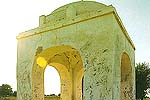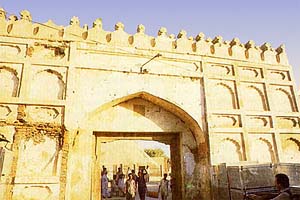
Hyderabad History
|
||
|
Incorporated as a municipality in 1853, it is an important commercial and industrial center. Its economic activities include textile, sugar, cement, and hosiery mills, manufacturing of glass, soap, ice, paper, and plastics. There are hide tanneries and sawmills. Ornamented silks, silver-work, gold-work and lacquer ware are also some of its exclusive products. Noteworthy antiquities include the tombs of the Kalhora and Talpur ruler, palaces of the former amirs of Sind. Newly developed settlements and industrial estates surround the congested old city area. An noteworthy characteristic of this city is, badgirs (wind-catchers) fixed to housetops to catch sea breezes during the hot summer season. A hospital, municipal gardens, zoo, sports stadium, and several literary societies are in the city. The University of Sind with 32 affiliated colleges was founded in 1947 in Karachi and moved to Hyderabad in 1951, where it lies across the Indus. Other education needs are served by numerous government colleges, the Liaquat Medical College and specialized vocational institutions Its remained the capital of the emirate of sind until the British general Sir Charles James Napier conquered Sindh in 1843. From 1947 to 1955 Hyderabad was the capital of Sindh Province, the new capital was shifted to Hyderabad. In 1766 the Kalhora ruler constructed a fort half a square km in area and still stands today. In 1843 the British arrived and defeate the Talpurs, Completing their Conquest of Sindh. |
||
|

